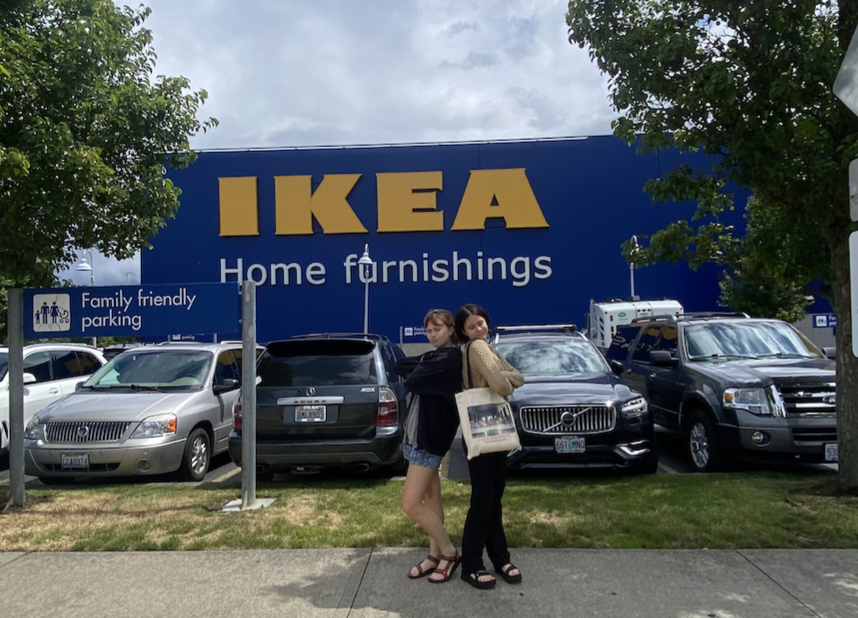IKEA: the place where dreams are born.
Many, if not most people have been to the paradise that is tall white walls and exposed gray ceilings. Maybe it draws you there because of its low prices, or the amazing Swedish meatballs that you get at the end of your shopping trip. IKEA sets up perfectly curated displays, painting a picture of an ideal life that can be bought for only $89.99.
IKEA was first founded in Sweden in the 1940s, before coming to the United States in 1985. The store’s biggest draw is its inexpensive furniture and home goods, appealing to people looking to refurnish, update or organize their homes. But when venturing out to IKEA, consumers are forced to walk the treacherous path that is the store layout.
The layout of IKEA is much more rigid than other stores. You start in the showrooms, where the thoughtfully structured rooms encourage you to picture how each item would look in your own space. The design focuses on the little details, making the space seem lived in. The fridges are full, the jars have photos of household goods inserted in them, and even the cutting boards have decals of food on them.
These details all assist in creating an immersive experience that encourages customers to purchase items. Even the signs on the walls say, “step inside and feel like home.”
After the showrooms, you follow a clear path with arrows to wind through the store. No matter what you actually came to buy, you are forced to go through the entire store and look through each section.
Lincoln Freshmen, Olivia Studenroth and Sadie Copeland, say that this layout makes them more likely to make unplanned purchases, especially when it comes to the smaller items that they can grab off shelves easily.
“You have to walk through every single thing to get to where you’re going. I definitely wanted to buy more things, but I didn’t bring my life savings with me,” said Studenroth.
After already being in the shopping mindset, and being further influenced to buy things in the showrooms, it is rare that you walk through each shopping section without buying anything. Items are displayed in ways that allow you to touch and sample them, further stimulating your brain and encouraging you to purchase items.
“If you’re looking for something for a room and you go there to look at it, you’re gonna see a bunch of other stuff for that room and you’re gonna be like, oh, I want that,” said Copeland.
This type of store layout is heavily based on an architectural concept invented by Victor Gruen, who designed the first indoor shopping mall. According to the podcast “99% Invisible”, the Gruen effect focuses on turning shopping centers into spaces where the general public feels comfortable. This often ends up translating into spending time and money in these shopping centers.
IKEA has mastered the Gruen effect, creating an environment that allows consumers to try each item and spend much more time in the store than initially intended. This is also true in terms of their restaurant that you can visit during your shopping trip.
The restaurant sells its staple, Swedish Meatballs, along with many other alternatives and sides, allowing you to eat a full meal for a very low price after completing your shopping trip.
Freshman Jack Severen said, “I like their food after you’re done shopping. Usually you’re there for a longer time than just a normal grocery store, so it’s kind of nice because I’m always hungry after.”
At the end of the day, people are much more likely to spend hours in the magical store than just a quick errand run, making shopping at IKEA more of an experience than a typical outing. IKEA is paradise to those who enjoy shopping, and to people who are fans of their famous meatballs.

